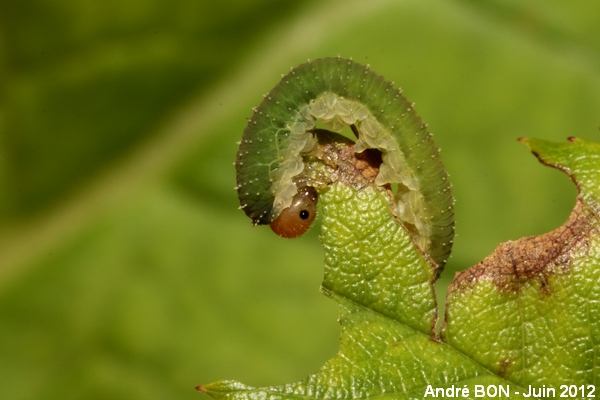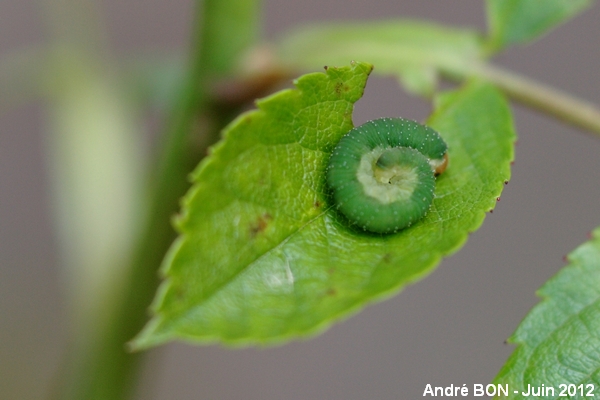

| Curled Rose Sawfly (Allantus cinctus (Linnaeus, 1758)) |


|
|
Scientific name: Allantus cinctus (Linnaeus, 1758) Common name: Curled Rose Sawfly Other names: Banded Rose Sawfly French name: Tenthrède du rosier, Tenthrède ceinturée. Order: Hymenoptera Family: Tenthredinidae Wingspan : 6 to 10 mm. Biotope: Larvae grow on Roses and Dog-roses but also on Strawberries. They are a pale green colour on the upper side and bear tiny white dots on the thorax and on the abdomen. The head is yellowish with black eyes. Geographic area: Europe, United States of America. Observation period : May to September in one or two generations per year. |
Allantus cinctus is an insect with a black body except a white median spot on the first tergite (this spot is larger on females than on males) and one yellowish white ring on the fifth abdominal segment of females. The legs are black. The tibias are reddish with some white colour at their base so that the knees appear white coloured. The antennae have nine articles. Articles 7 and 8 are not broadened at the apex. There is no well marked narrowing between the thorax and the abdomen and the wings are held over the body when in rest. Females bear a saw-like ovipositor used to make small cuts in the host plant stems to deposit their eggs. The caterpillar-like larvae have three pairs of legs and at least six pairs of false legs. Allantus cingulatus differs by the base of its hind femora which is yellow as the coxae and the trochanters. All these parts are black on Allantus cinctus. Allantus cinctus over winters as a pupa in the soil. |
| [To know more about the Curled Rose Sawfly] [Next picture] [Top] |

|
Close-up view on one larva eating a rose leaf in my garden. I have only observed a few isolated larvae which have not caused noticeable damage. |
| [To know more about the Curled Rose Sawfly] [Previous picture] [Top] |

|
Here is one larva in its resting position. |